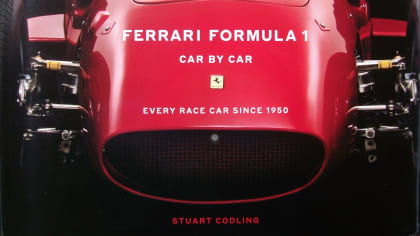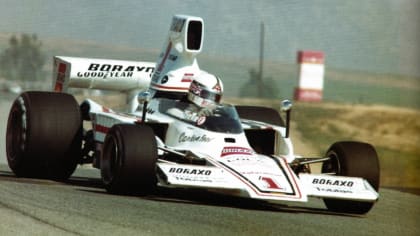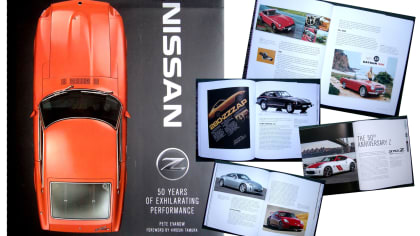Review: 1970 Maximum Muscle

The Pinnacle of Muscle Car Power
Uncle Tito's 1969 Pontiac GTO was my first direct contact with muscle car royalty ... this book is a warm reminder of those days.
By Hector Cademartori
Thu, May 13, 2021 12:00 PM PST
Title: 1970 Maximum Muscle - The Pinnacle of Muscle Car Power
By Mark Fletcher and Richard Truesdell
Publisher: Motorbooks
Format: Hardback, 176 Pages
ISBN: 9780760366783
Illustrations: 250 color photos
Published: May 11, 2021 $45
… I’ve always felt, that, in the non-fiction class of books there are two major categories: encyclopedic books and informative books. The former are for people who already know about the subject matter and the latter for those who want to learn about it but not necessarily acquire heavy in-depth knowledge.
A good example of encyclopedic books is “Twice Around the Clock - The Yanks at Le Mans”, Tim Considine’s epic, multi-volume heavy hitter which covers the participation of every American who ever drove down the Les Hunnaudieres Straight in anger at every one of those French classics from the first in 1934. This is a book for those who are familiar with this event and want to learn more, much more.
Maximum Muscle falls into the other category.

This new colorful and informative book from Mark Fletcher and Richard Truesdell in its 175 pages (including the Index) covers American muscle car production in the single year of 1970.
The description that came from Quarto Motorbooks, the publisher, gives the perfect synopsis of the contents and I don’t think that they’ll mind if I use it here:
“1970 Maximum Muscle not only explores the factors that led to the decline of the most exciting era in the American automotive industry, it details some of the new models and model options that arguably made 1970 the climax of the muscle car era from engineering, styling and cultural standpoints, As the war among GM, Ford, Chrysler and AMC played out at dealerships, dragstrips and drive-inns, ready-and-willing gearheads drove off dealer lots in potent behemoths like the Buick GSX, Oldmobile 4-4-2 and Ford Torino Cobra. Muscle car stalwarts like the SS Chevelle, Pontiac GTO and Plymouth ‘Cuda became available with optional LS-6, Stage-1 and Hemi engines, respectively. Manufacturers racheted up the advertising hyperbole at the same time, offering performance packages were de rigueur. Meanwhile, on the popular SCCA Tran Am circuit, top drivers campaigned more nimble muscle off-the-rack cars like the Camaro Z/28 and the Boss 302 Mustang”.
The book’s Introduction sets the stage with a description of the social and political times that were all in play in 1970: the Moon landing, the Viet Nam war, the beginning of emissions controls and the small car invasion among other circumstances that developed at the same time that muscle cars were working hard in their quest of the “magic” 10 pounds per horsepower target.

Then the book moves to the interplay of the pieces of the big picture in “Prelude to Mayhem” covering the 1969 ½ models like low-cost drag racing machines, the Trans Am “pony cars” and the cars designed to pursue NASCAR glory such as the Talladega from Ford or the Dodge Charger Daytona.
For those fond of keeping score, the next chapter, appropriately entitled: “1970 Muscle Climax”, dutifully covers every model from every manufacturer that earned the right to be part of this high-tension gang.
The brief Epilogue brings the story of the beefed-up breed right to present day, touching on Camaros, Dodges Challengers, Chargers and Mustangs, including the new (and very quick) Mach-E electric version of the legendary pony.
Page after page of beautiful color photos, 250 of them to be precise, complete the package.
… On a personal note, I’m probably the perfect audience for this book because I’m interested in these cars and I want to learn about them, but I don’t really want to know the name of the wife of the owner of the company that supplied the cylinder head bolts to Chrysler for their ‘Cudas. I’m sure there’s an encyclopedic book out there somewhere with that information.
In 1970 I was a teenager in Buenos Aires, Argentina, and even thought we had all the American manufacturers, for us they produced older models from the late fifties and sixties with tooling that had been already amortized.
The cost of gasoline was an issue (and still is) in Argentina, therefore Falcons, Chevys and Valiants came equipped with trusty in-line sixes.

Only special versions of Ford Fairlanes and the big Dodge GTX Coupes came with the powerful V8s. Most of us drove made-in-Argentina 600, 1500 and 125 Twin-Cam Fiats and 404 and 504 Peugeots which came with more reasonable 4-cylinder engines and we learned about the fabled American muscle cars through the pages of magazines like Road&Track, Car and Driver and Motor Trend.
In those days imports were closed to protect the Argentine automotive industry but foreign diplomats and executives were allowed to bring cars and motorcycles with the caveat that they had to keep them for a period of time (I believe it was five years) before being allowed to sell them. As time went by handfuls of rare, exotic vehicles would show up for sale in the posh dealerships along Buenos Aires’ exciting Avenida del Libertador for us to dream about.
My uncle Tito Cademartori was pretty well-off and one day he showed up with a 1969 Pontiac GTO … it was truly an OMG! Moment for me. It was red and beautiful and looked so powerful. With the car came a brochure of the Pontiac product line-up that included the top-of-the-line version of that GTO with a sort of psychedelic decal on the sides that read “The Judge”, a nacelle on the hood for the tachometer and a rear spoiler, just like the one on page 26 in this book..
That was my first direct contact with muscle car royalty...this book is a warm reminder of those days.
About The Author

Hector Cademartori honed his racing art in Buenos Aires. In 1983, he left his job with Corsa Magazine in Argentina and moved to Southern California to specialize in motor racing art. Today, you can find Hector’s art on Indianapolis 500 Yearbook covers, Laguna Seca Raceway, Auto Club Speedway and Carrera Panamericana posters, the NHRA, foreign and domestic automobile and motorcycle magazines, motorcycle manufacturers, Toyota Motorsports, TRD and Lucas Oil. Hector races his 1973 Datsun 240Z “Ferratsun” around the So Cal circuits, and a 1991 Volvo 740 Wagon with the 24 Hours of LeMons.








